TELEVISION NEWS STORIES
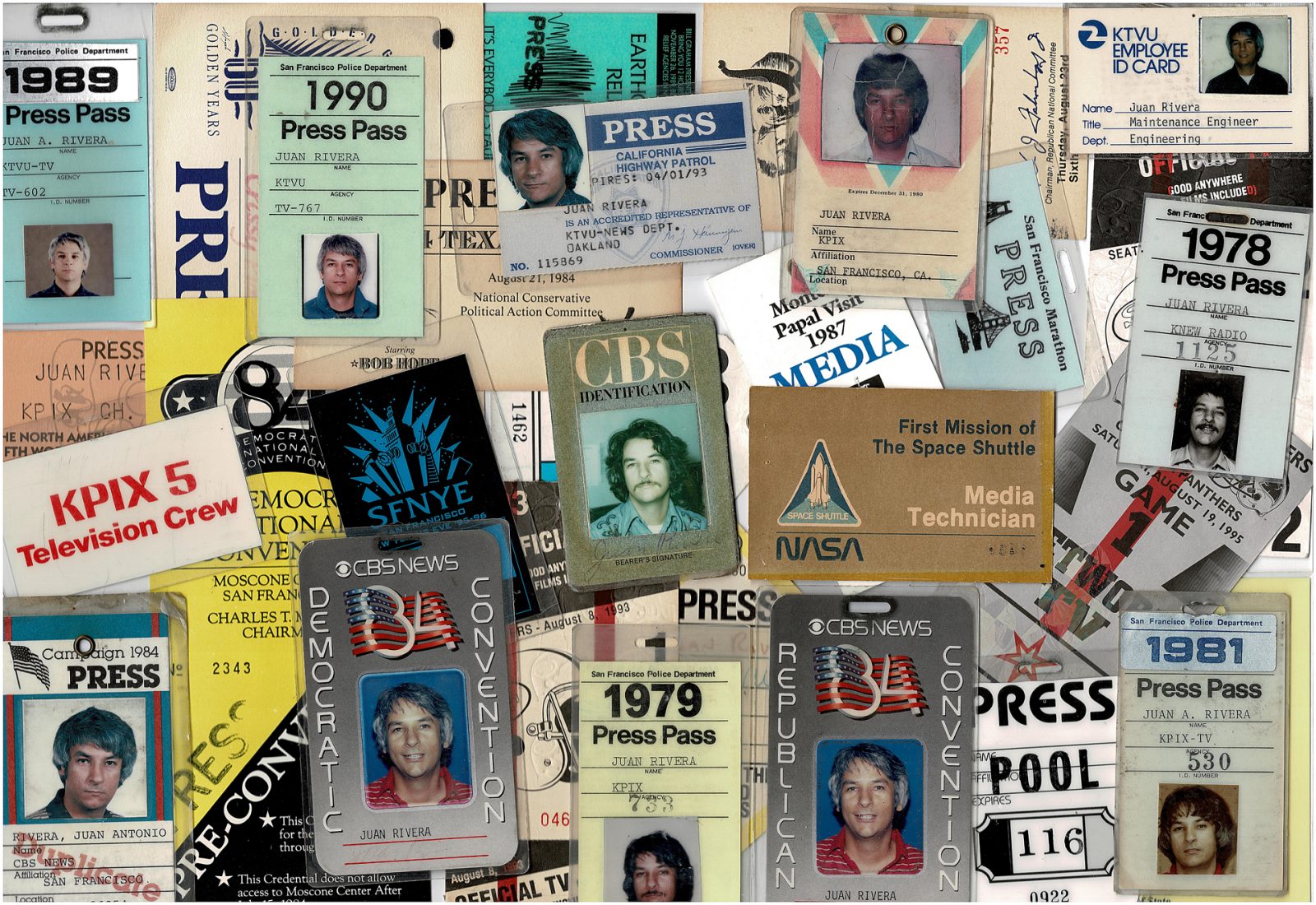
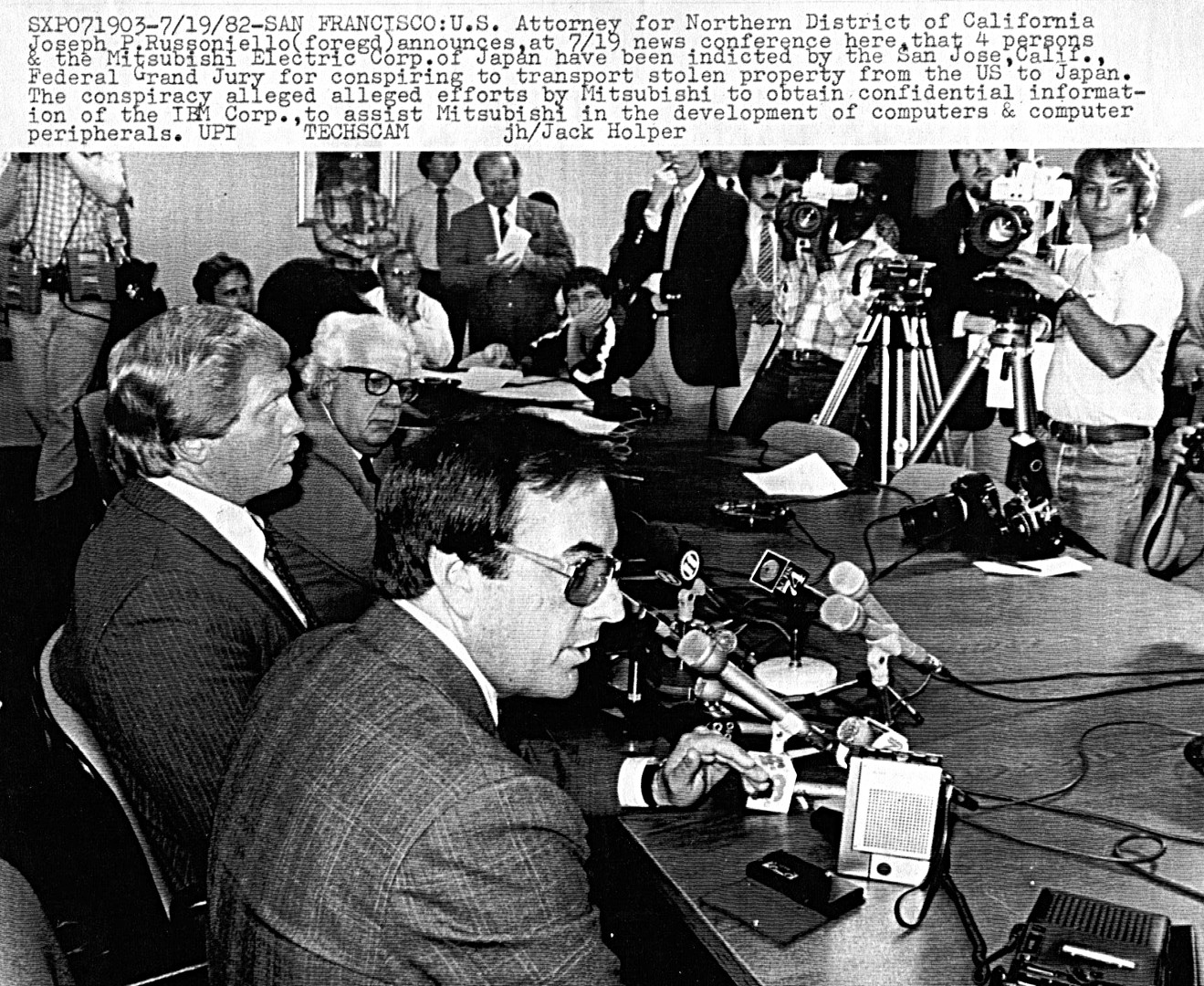
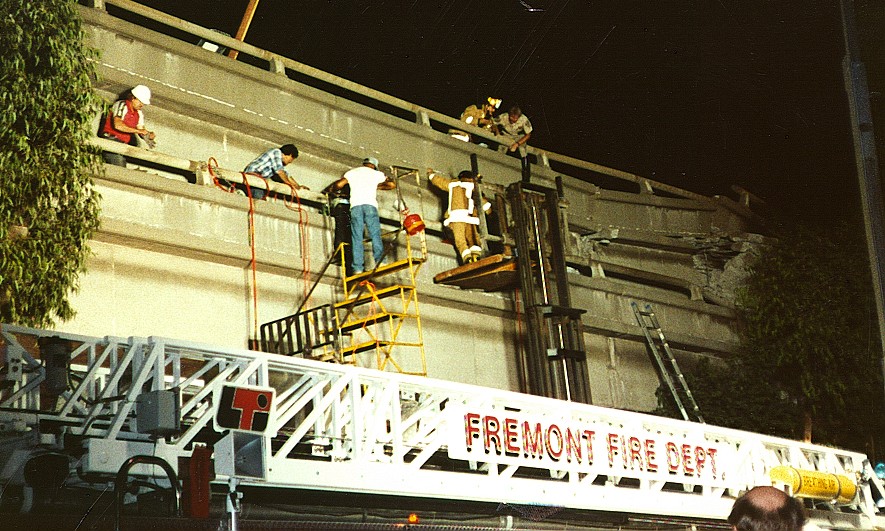
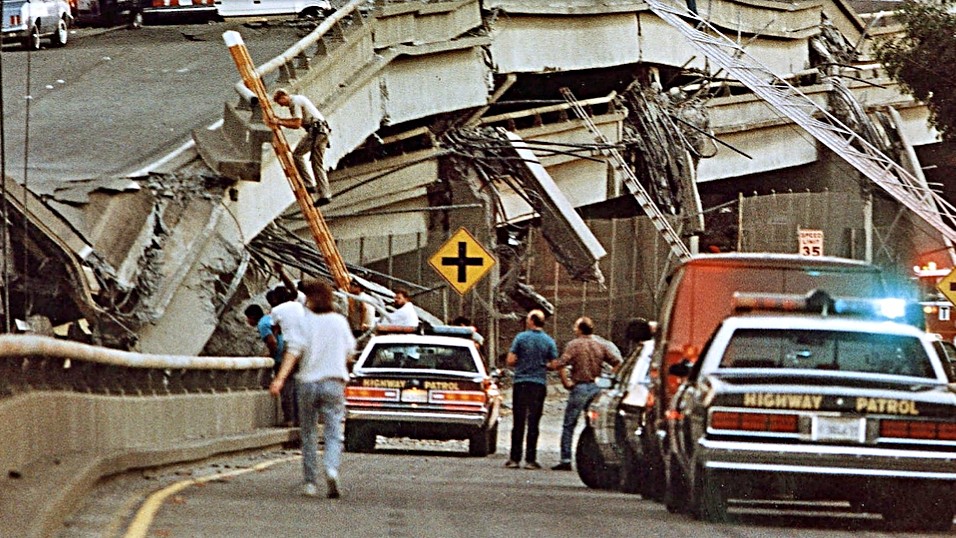
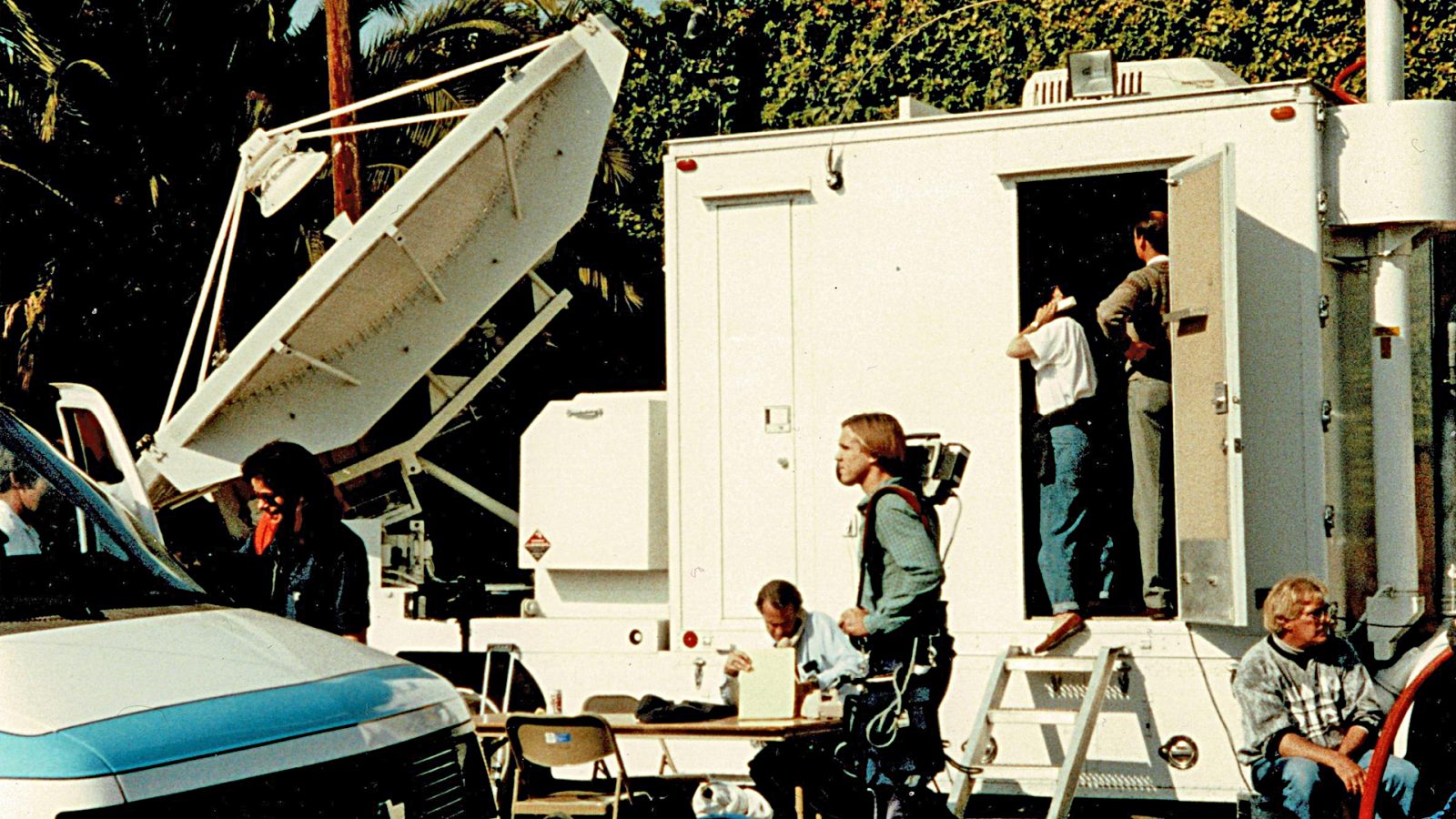
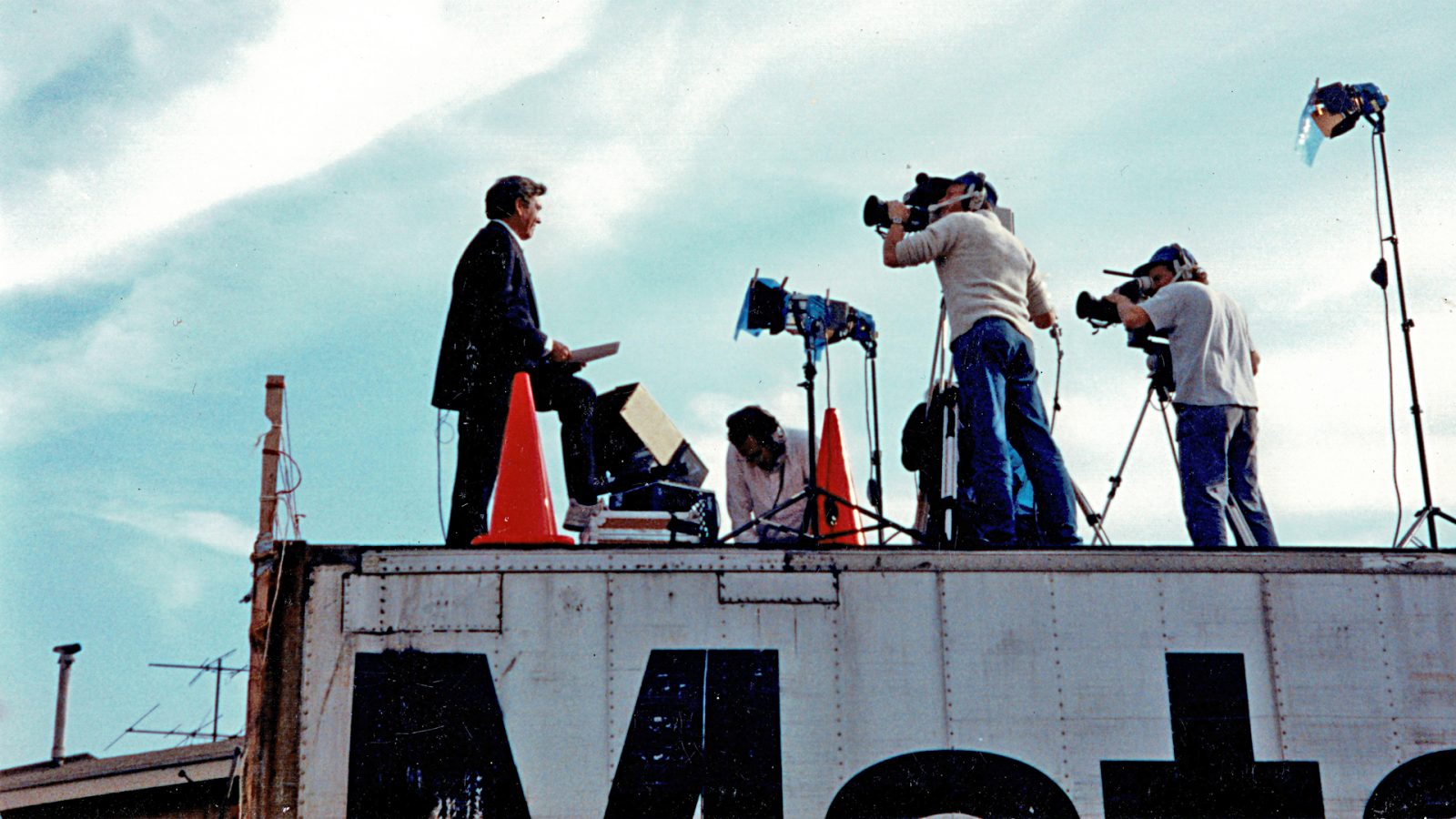
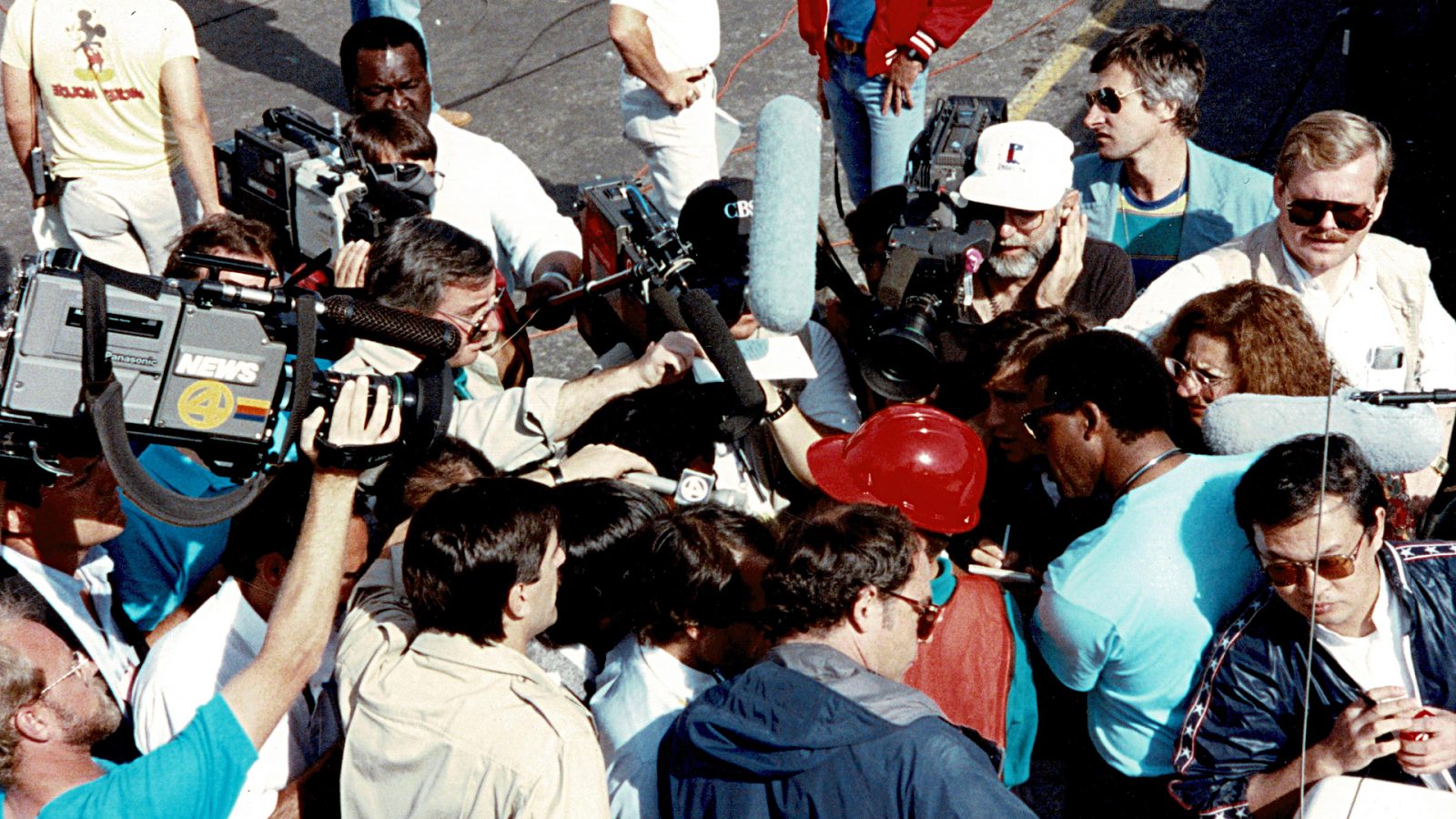
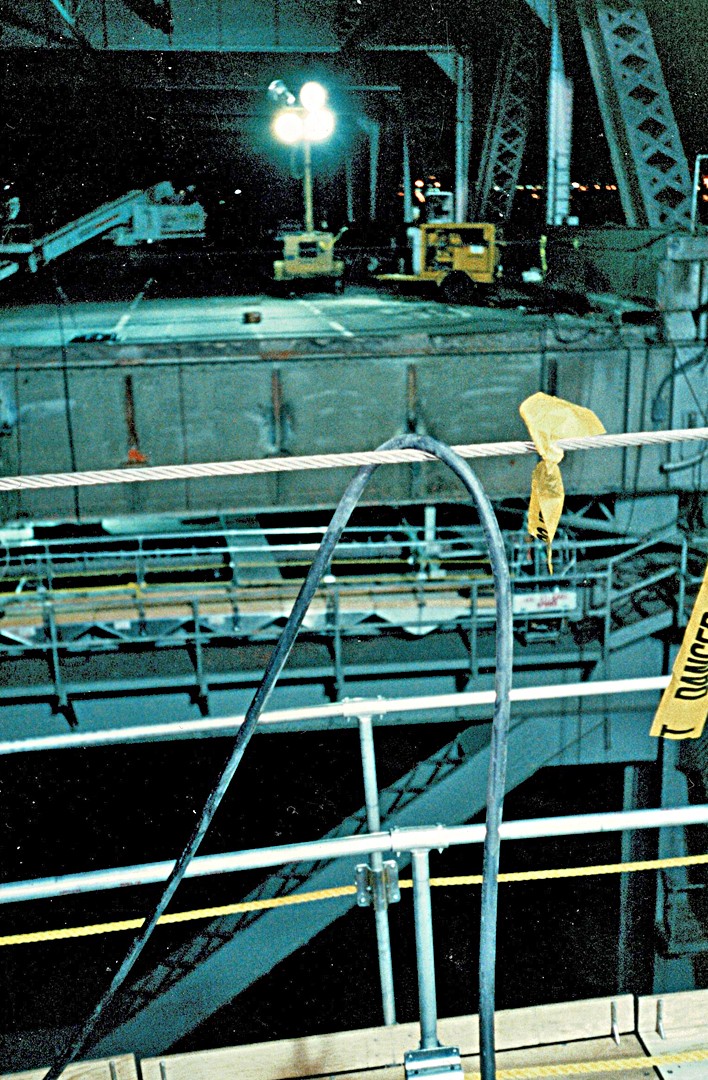

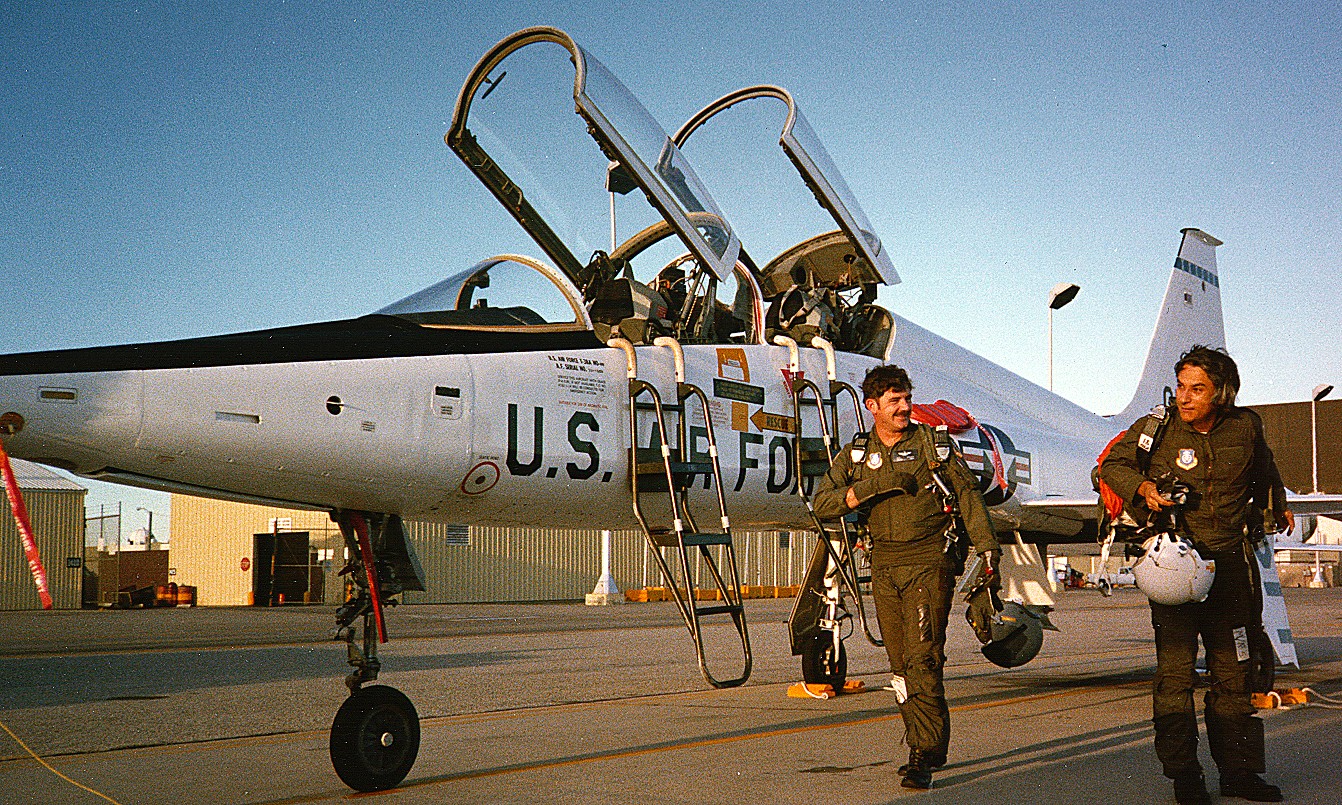
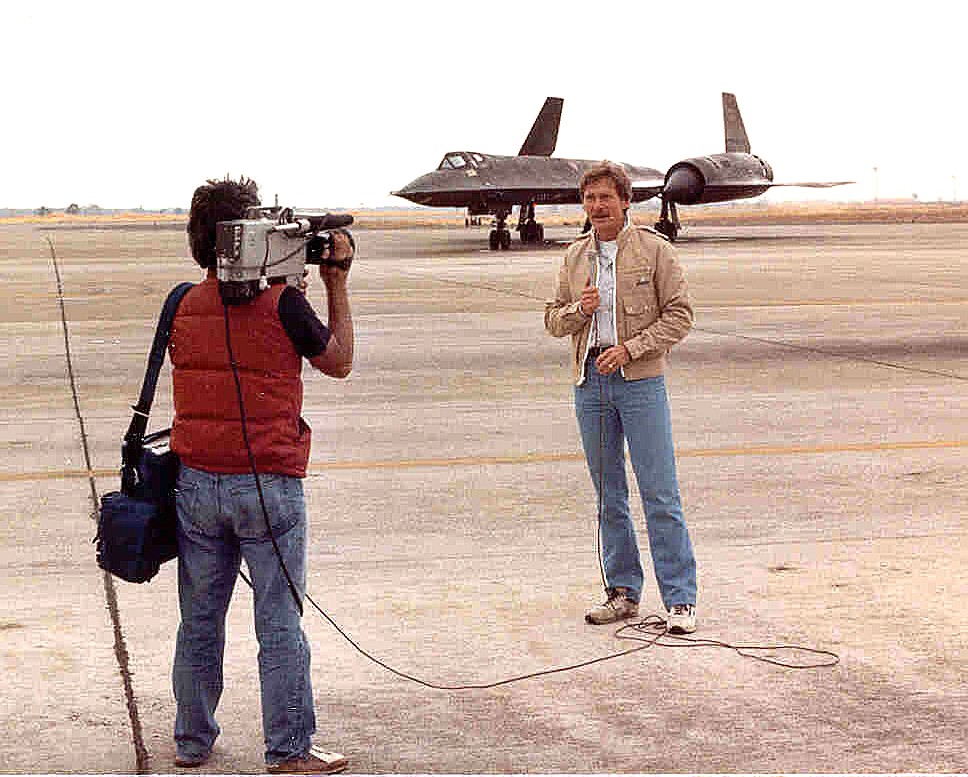
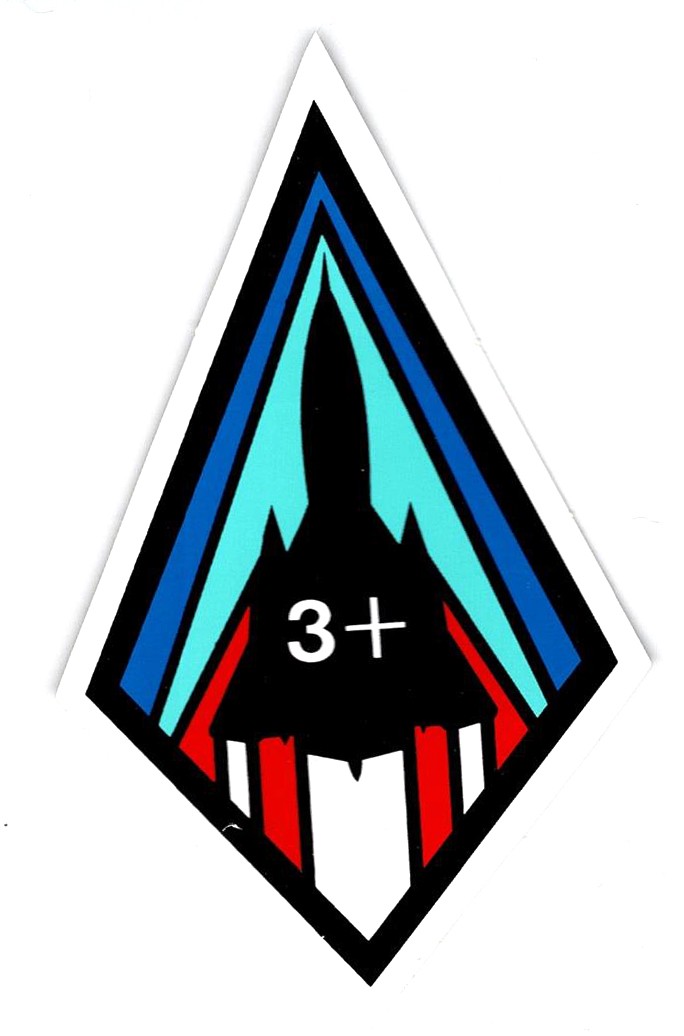
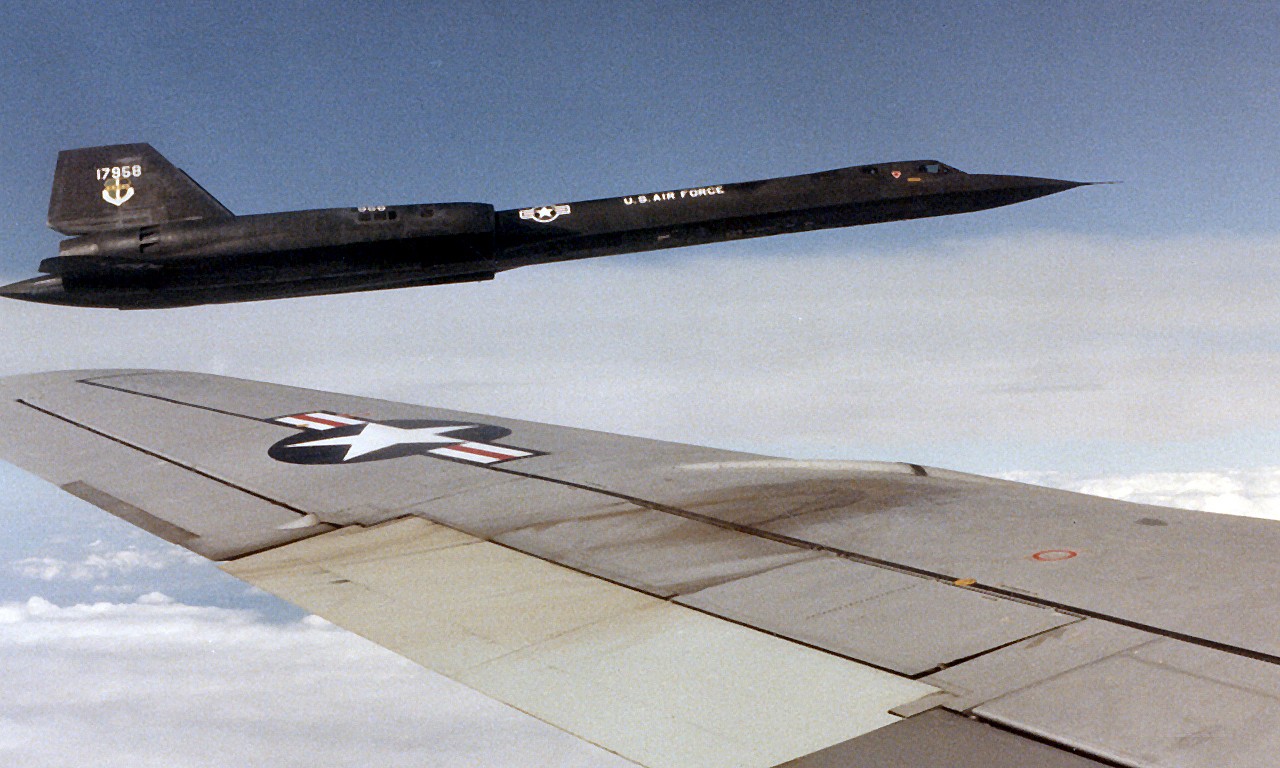
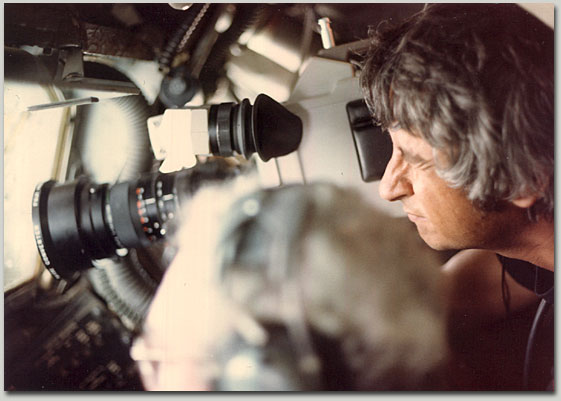
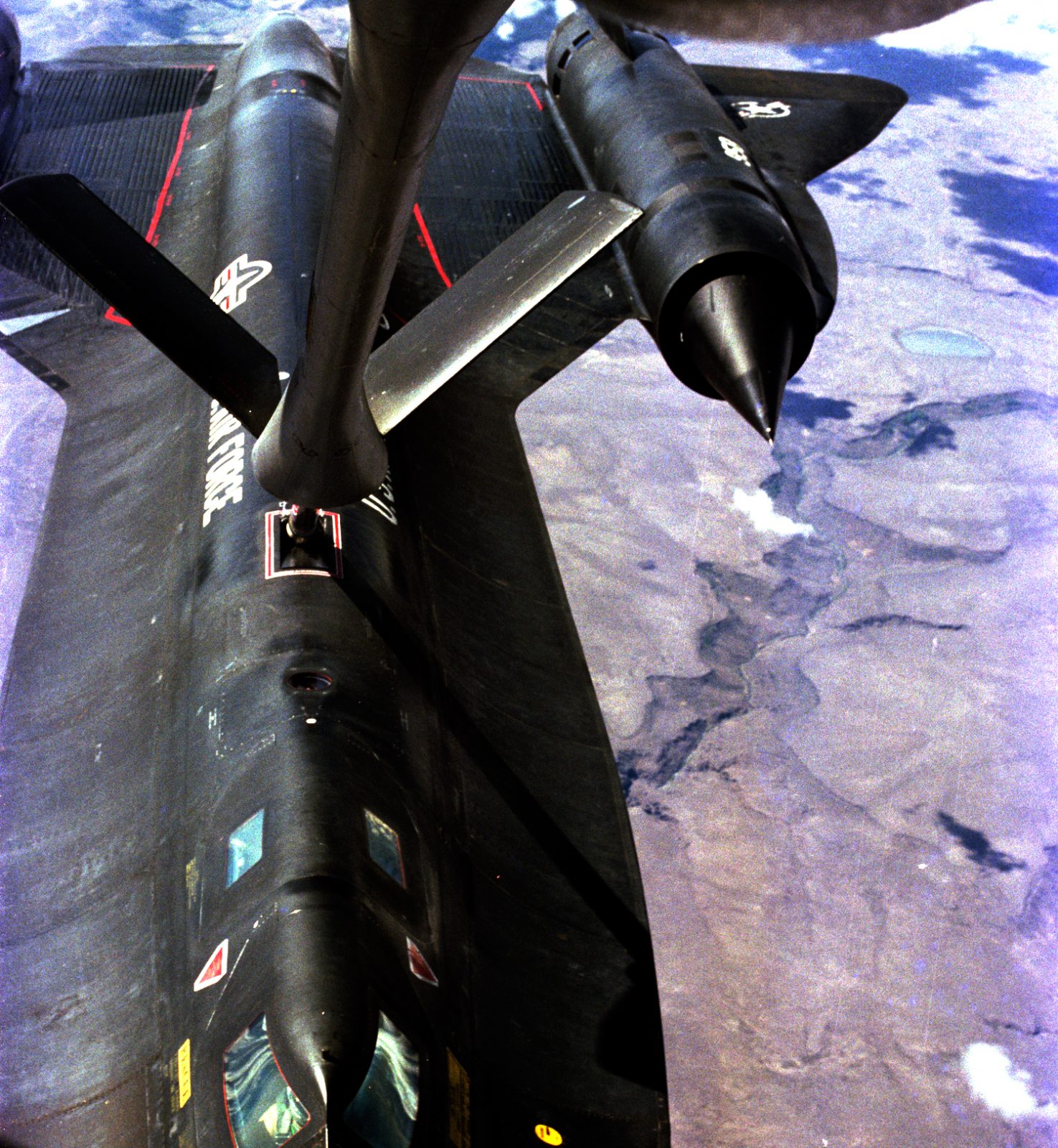
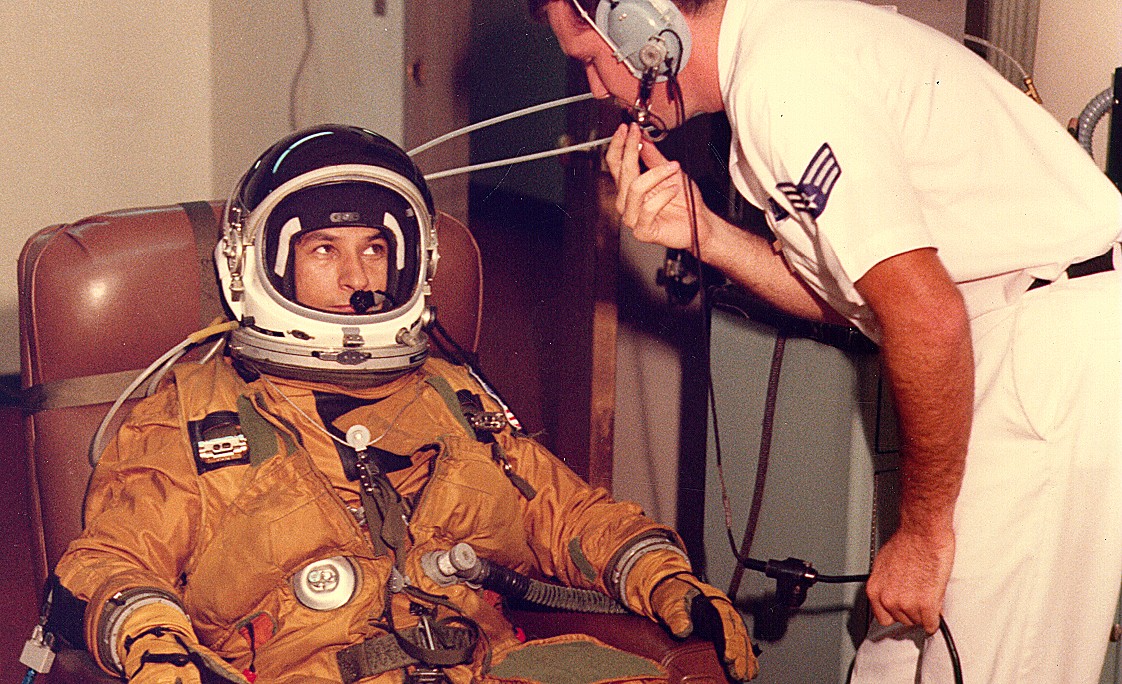
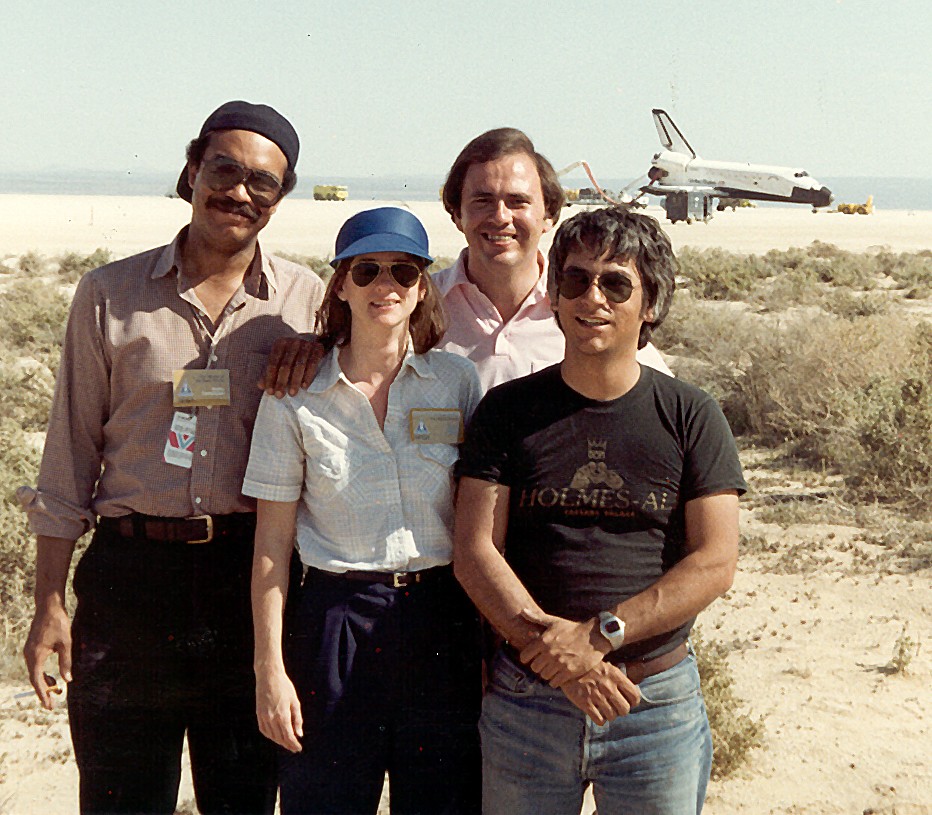
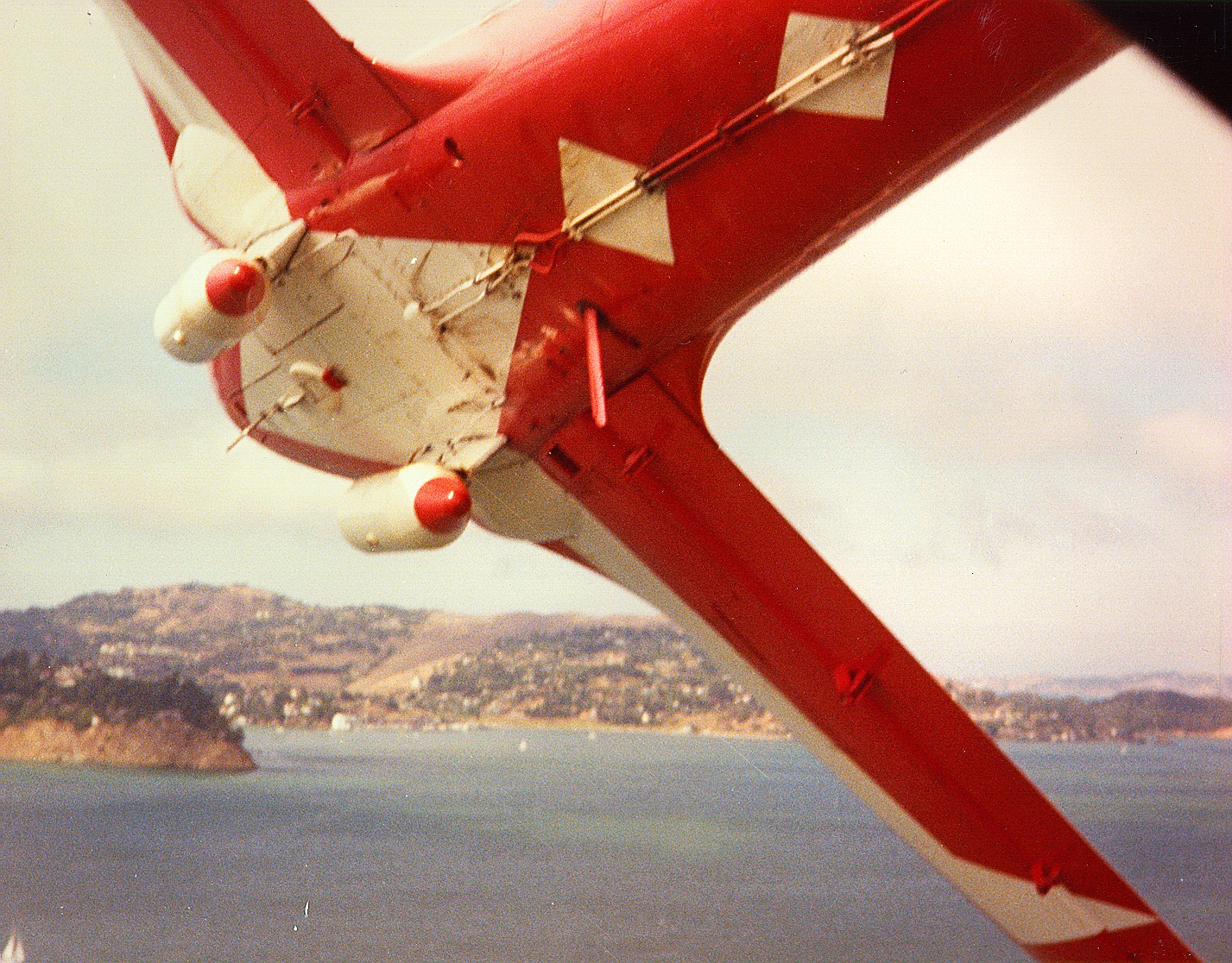
My 20 Year Pres Pass collection!
(7 in Radio and 13 in Television)
Hey! That’s me in the upper right!
In my 13 years driving around in an ENG news truck, I’ve covered some memorable events, but the truth is that most were either very unpleasant, or completely routine.. This is a wire service picture from 1982. It was a typical press conference. By the time I returned to mt truck I had already forgotten the reason for the conference and was headed off on my next assignment. This was the way I spent the bulk of my shifts, and then I usually did a live shot for the nightly news. But about once a year a huge unplanned event would overtake us. It was usually something awful.
This is one of those huge breaking news stories that seem to occur once a year. At 4:05 PM on August 17, 1989 The Loma Prieta Earthquake hit the San Francisco Bay Area, collapsing a long stretch of the Cypress Freeway. The upper deck fell on to the lower deck trapping many homeward-bound motorists.
KTVU’s studios were only blocks from this scene and I was the first operational ENG truck to arrive. The nation first learned of the collapse from KTVU’s coverage which originated from my truck.
. I spent two weeks at that location. That experience changed my life and got me interested in Urban Search and Rescue (USAR), Eventually I became a member of FEMA CA-TF3, one of four task forces in California.
Forty two people died in this collapse. The rescue effort continued for two weeks. Buck Helms was the last survivor pulled from his crushed vehicle 96 hours after the collapse.
I remember when they pulled him out. He had the strength to raise his arm but he later died of his injuries in the hospital.
The experience of watching rescue workers risking their lives crawling into an unstable structure that could shift and crush them made an indelible impression on me and led to me eventually joining a FEMA Urban Search and Rescue task force.
San Jose Mercury News photo
Media descended on this disaster from around the world. The entire area was packed with C-Band and Ku-Band satellite uplink trucks like this one, as well as any large rental trucks that could be pressed into working space for their news crews. There was a steady stream of smaller stations lined up in front of my truck each day. I would feed their tape back to my station for uplink back to their stations around the country.
Since KTVU TV was only blocks from the Cypress Freeway collapse, and we had very good relations with all the networks, CBS News was invited to move into our newsroom for the duration of their stay. They needed a location for Dan Rather to do his nightly national news, so we found him a handy Matson Line shipping container. You can see the collapsed upper deck in the lower left of this picture. It was an excellent location.
Once order is restored to a disaster scene, the press is usually cordoned off in a separate area and spoon fed information at press conferences. This is necessary to bring order to chaos, but leaves the members of the press very frustrated and unable to properly cover the story.
In this picture, a rescue worker (red hard hat) accidentally wandered into our area looking for a portapotty. The poor man was mobbed by the information-starved media looking for any crumb of information they could get. In the trade this is called a “Gang Bang”.
You may have noticed that my first picture of the Cypress Freeway collapse was shot in the dark, even though the earthquake happened hours earlier at 4:05 PM. Even though our studios were located only blocks from the collapse, in the chaos we did not realize it had occurred. We did hear that the Oakland Bay Bridge had collapsed on our scanners and I was dispatched on a tugboat to cover that. It took several hours to get into the bay, and shoot a helicopter landing on the upper deck. The bridge had not collapsed, but a section of the upper deck failed and dropped onto the lower deck, badly injuring one woman. It was only after returning that we learned that the Cypress Freeway had collapsed in our backyard.
I took this picture several nights later, after being escorted to the break in the bridge by a California Highway Patrol cruiser. Traffic on the upper deck normally flows in the opposite direction – towards oakland from San Francisco, so the only way to arrive at this spot was to drive in the wrong direction on the freeway.
It was probably the most unnerving drive I have ever taken. When going the wrong direction on the freeway, all the reflectors are red in your headlights. All of the roads were closed, so there was no one in sight but the CHP cruiser with his lights flashing.
What you are seeing in this picture is the tao halves of the bridge completely disconnected from each other. All the damaged roadway had to be removed. It was a eiry sight!
Another disaster that sticks in my mind was a huge fire in Napa. I believe it covered 32 square miles before it was eventually extinguished. We spent days behind the fire lines experiencing an apocalyptic scene – Terrified horses running down the street, many homes on fire, an orange ball barely visible through the smoke where the sun should be. Nothing left on some homes but a fireplace and a swimming pool with 20,000 gallons of water, but no one around to use it.
In this picture I got a bit too close to the action. My partner caught this shot thru the windshield as the fire crested over the top of our truck while I was reversing course. It was a balancing act to get the shots without getting injured. I managed to do this for thirteen years without an injury…
As a helicopter and fixed wing pilot, I always tried to talk the news director into doing at least one aviation story a year. This one involved the Test Pilot school at Edwards Air Force Base. (That’s me on the right).
Reporter, Don Knapp and I spent a week at Beale Air Force Base shooting a special for NBC News and our station, KRON. It took me a year to get permission from the Air Force to do this story as the SR-71 was operational and highly classified at the time. I needed permission before removing the lens cap every time I shot. This particular aircraft holds the altitude and speed record for air-breathing aircraft.
This was the 9th Strategic Reconnaissance Squadron patch. They flew the mach 3+ SR-71 Blackbird – the highest flying and fastest air-breathing aircraft that ever flew.
I wass fortunate to have been able to do two television specials on the SR and fly in the tanker for two SR refueling missions.
This story took me to Beale AFB, the home of the 9th Reconnaissance Wing, and the home base for all SR-71 and U2 squadrons. I spent a week there doing the story and flew on a refueling mission in the tanker. The audio is the pilot and copilot in the Tanker discussing what the SR pilot will be doing once we are clear.
I shot the next slide from the Boom Operator’s position. He lays on his stomach when operating the boom. I had to fit in next to him…
The tanker is flying at maximum sped and the SR-71 is flying so slow it is behind the power curve and needs afterburners to maintain that slow speed. To stay in formation with the tanker as fuel adds weight to the SR the pilot must kick on engine in and out of afterburner which causes asymmetrical thrust and the plane flies sideways.
After spending a week with the SR-71 crew and making friends, I was extremely lucky to be able to try on Major Hornbaker”s space suit. We just happened to be the same size. What a thrill!
April 1981 – NASA Dryden / Edwards Air Force Base – The first Shuttle mission STS-1 ( Columbia.) Left to right – Lorne Morrison (cameraman), “Nine G’s” Louise (charter pilot), Greg Rich (reporter), and your’s truly (engineer and audio)
I was honored to fly with the Canadian Snow Birds twice. In this picture we are in a nine-plane formation over the San Francisco Bay. Yeah, we were close enough to count the rivets in the belly of the lead ship. They flew the Tudor jet which iwas their primary military trainer at the time.